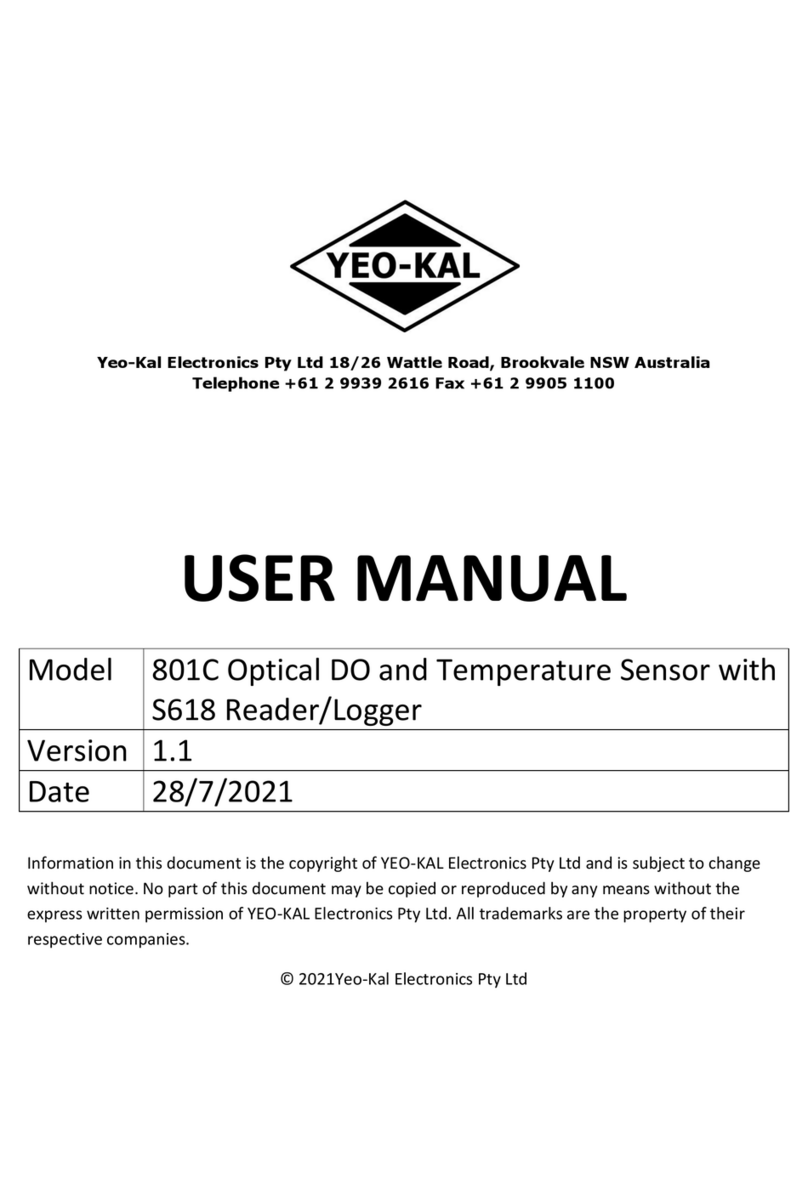
3
PROGRAMMING THE READER UNIT.................................................................. 23
CHECK BATTERY (7)...................................................................................... 24
DATA PORT OFF/ON (8) .............................................................................. 24
SENSOR SERIAL NUMBER (9) ......................................................................... 25
SET UP MENU...........................................................................................26
SET CLOCK (1) ............................................................................................. 26
611 SETUP (2) ............................................................................................ 26
ASSIGN/DEL SENSORS (3).............................................................................. 26
CONFIGURE DISPLAY (4)................................................................................ 26
SET PRECISION (5)........................................................................................ 27
DATE FORMAT (6)........................................................................................ 27
INSTRUMENT TIMEOUT (7) ............................................................................ 27
SET FILE IN (8) ............................................................................................. 27
SET FILE OUT (9).......................................................................................... 28
BEEPER (10)................................................................................................ 28
TURBIDITY AVERAGE (11).............................................................................. 28
ID SENSOR INPUTS (12) ................................................................................ 28
LIGHT KEY ................................................................................................... 28
CALIBRATION ...........................................................................................29
TEMPERATURE CALIBRATION .......................................................................... 31
HIGH CONDUCTIVITY/SALINITY CALIBRATION .................................................... 31
LOW CONDUCTIVITY CALIBRATION................................................................... 32
DISSOLVED OXYGEN CALIBRATION ................................................................... 32
PHCALIBRATION .......................................................................................... 33
ORP CALIBRATION ....................................................................................... 34
TURBIDITY CALIBRATION................................................................................ 34
DEPTH CALIBRATION ..................................................................................... 35
INTERNAL BLUETOOTH AND GPS ..............................................................36
BLUETOOTH................................................................................................. 36
One off Pairing:.................................................................................... 36
GPS 36
ESTABLISHING BLUETOOTH AND GPS POWER ................................................... 37
Enable power:
Enable GPS functionality:
Display GPS data to screen and memory allocation
MAINTENANCE.........................................................................................38
READER UNIT MAINTENANCE ......................................................................... 38
RESET......................................................................................................... 38
BATTERY REPLACEMENT ................................................................................ 39
................................................... 37
................................................... 37




























